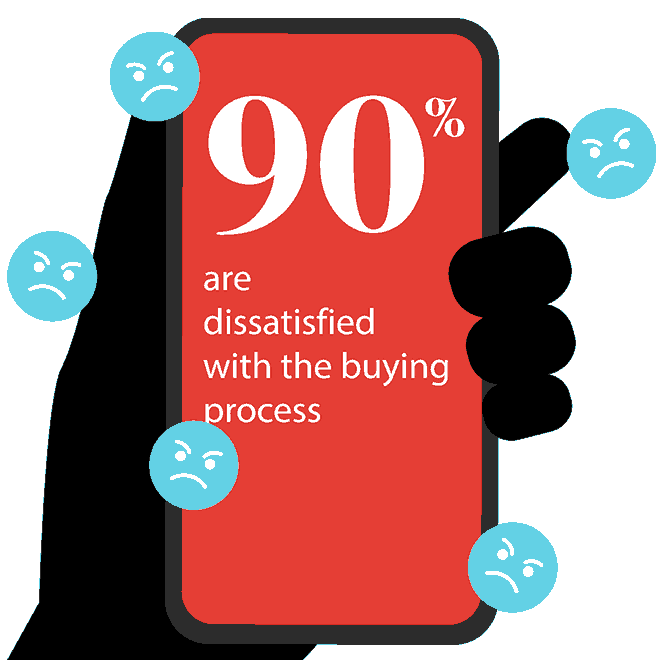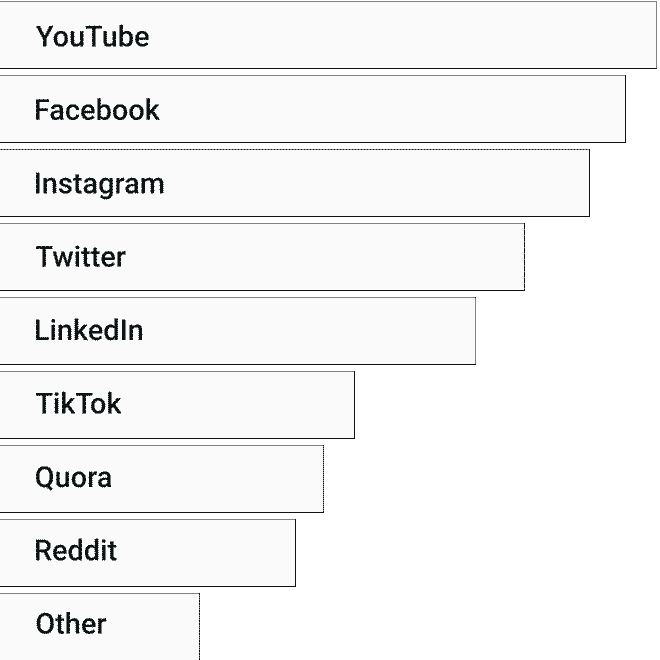Let’s do different
Decoding the data behind this year’s vital stats to help B2B marketers move forward

“Insanity is doing the same thing over and over again and expecting different results.”
~ Albert Einstein
It’s all been very stop/start hasn’t it?

Being a B2B marketer really shouldn’t be this hard.
Between geopolitical and economic uncertainty, 75% of CMOs being asked to do more with less, and nearly 90% of global business buyers saying their purchase process was stalled in 2023 it’s no wonder that marketers feel under more pressure than ever before.
That’s why it’s the perfect time to take stock of the stats that tell you all about how your B2B buyer preferences are changing, and answer the question of whether to carry on doing exactly what you’re doing or if it’s time for you to do different.
Meet your new B2B buyer

Buyers are younger, more demanding, and increasingly dissatisfied.
Like it or not, nearly two-thirds (64%) of B2B buyers are Gen Z or Millennials, and a whopping 90% reported dissatisfaction with some aspect of the buying process.
The message here is simple – traditional approaches simply don’t cut it anymore. Almost 60% of business technology buyers had a negative perception of their most recent purchase process, finding it too complex or time-consuming.
Modern B2B buyers prefer digital self-service, with 75% favouring a rep-free sales experience instead of the complex and time-consuming processes many businesses still offer. Why? Because buyers now arrive with ‘consumer-grade’ expectations. The winners here will be the businesses most able to meet those expectations.
Channel-hopping
buyer journeys

Today’s buyers aren’t dutifully lapping everything up on LinkedIn.
Instead, they’re exploring a myriad of channels. On average, B2B buyers use 10 different channels and make 62.4 touches across at least 3 channels before closing a deal.
Surprisingly, YouTube tops the list of social media platforms influencing purchase decisions at 65%, compared to LinkedIn at only 43%.
Moreover, 74% of buyers use e-commerce sites and rank them as their number one preference over in-person sales, video conferences, email, and good old-fashioned phone calls. The stats make it clear that many marketers need to revisit and revise their nurture strategy.
Where do buyers
place their trust?

Authenticity and community are crucial to today’s B2B buyers.
They rely heavily on getting guidance from each other as well as from written reviews and recommendations.
90% of buying decisions are influenced by peer recommendations, and 85% of buyers trust online reviews as much as personal recommendations – with 71% focusing on those written within the past six months.
In fact, reviews are ranked as the number one factor driving B2B purchase decisions, beating out traditional sources like industry publications or trade shows. Many businesses still have these the wrong way around. Is yours one of them?
Content is king
but quality reigns

Far too much content continues to miss the mark with buyers.
55% of people feel B2B content looks and feels the same, and only 30% of thought leadership producers feel their content is used effectively.
71% of buyers say that less than half of the thought leadership they read provides them with valuable insights. This is doubly alarming when you consider that good thought leadership causes 70% of C-suite leaders to question whether to carry on working with a supplier (Edelman, 2024).
While 50% of B2B buyers say they rely on industry thought leaders to stay up-to-date, 60% of buyers place a high value on the opinions of independent content creators. Your B2B influencer strategy therefore needs to focus on how to get these highly trusted opinion-makers to endorse your business.
All in favour say ‘AI’

AI is a hot topic, but opinions and stats present a mixed picture.
While 90% of online content is predicted to be AI-generated by 2026, only 20% of consumers are actually comfortable with businesses using AI-generated content. In addition to this, 53% of global business leaders view AI-generated misinformation as a serious risk.
AI is also expected to significantly impact web traffic. By 2028, businesses will see organic site traffic decrease by 50% or more as consumers embrace GenAI-powered search.
Alongside cookieless advertising, this means marketers will have to work much harder to stand out online and in search.
Bring your marketing
out of the past

Marketers demonstrate a robust resistance to change.
Despite the pressure to innovate, 80% of B2B marketers continue to stick with the methods they’ve relied on for years.
Email remains a top choice, with 59% of marketers believing it to be more than twice as effective as PPC or paid social media – despite focusing spend on those channels.
While 39% of people in the UK say they’re ‘not likely at all’ to pay attention to social media ads, the cost of advertising on social media is soaring: Meta’s cost per thousand has increased year on year by 61%, Google by 75%, and TikTok by 185%.
Let’s talk about LinkedIn

LinkedIn remains the apple in B2B marketers’ eyes.
89% of marketers use it for demand-gen, and it’s grown in popularity with LinkedIn users, too – they shared 41% more content on the network in January 2023 than in the same period in 2021.
However, there continue to be questions about LinkedIn’s reliability as a platform.
Approximately 25% of its traffic comes from bots, and only 4% of marketers are measuring the impact of their LinkedIn campaigns beyond six months.
It’s also expensive, with the cost of advertising on LinkedIn rising by as much as 30%. This is especially challenging when marketing budgets remain flat – only 9.1%, on average, of total revenue in 2023.
Create ads you can’t ignore

Creativity remains the key to standing out.
But you need to give your creative room to stretch its legs, otherwise you risk confining your campaigns to standing quietly at the back.
47% of marketers say they still rely on stock imagery in their visual content, despite 39% of marketers saying stock-based imagery underperforms.
It’s unsurprising, then, that 75% of B2B businesses are failing to produce advertising with the potential to drive long-term growth.
And, with 70% of B2B marketers admitting they hadn’t tried anything new creatively in the past year, you can’t blame the 49% of B2B buyers who say they’re bored by the campaigns they see.
The opportunities
are out there

Online communities are growing, with 41% of consumers planning to increase their involvement in 2024, and marketers recognise the value of this – 70.0% say community-building supports customer retention.
Audio content also remains influential, with 40% of B2B executives saying they always listen to ads and sponsor messages on podcasts and nearly 60% likely to buy the products mentioned (Podpod 2023).
Want to do better?
Do different.

We know there’s a lot here for B2B marketers to digest, so here are three key thoughts for you to take away and consider:
- Rethink your buyer: They’re behaving more like B2C buyers, valuing authenticity and community.
- Revise your channels: Don’t be afraid to experiment with new, innovative channels.
- Refresh with tech: Use AI to improve content quality, but don’t put all your eggs in that basket.
We’ll be wading into the issue of ‘what do I do next’ in greater detail in an upcoming blog post.
If you’d prefer to put your feet up and watch something instead, we recently hosted a LinkedIn Live talk, and you can watch the playback right now. In it, our senior strategists talk through the research and tackle the implications for your marketing strategies.
And if you’d like to talk to one of our team members right now about how you can start doing things differently to meet your buyers’ changing needs, we’re always happy to hear from you.